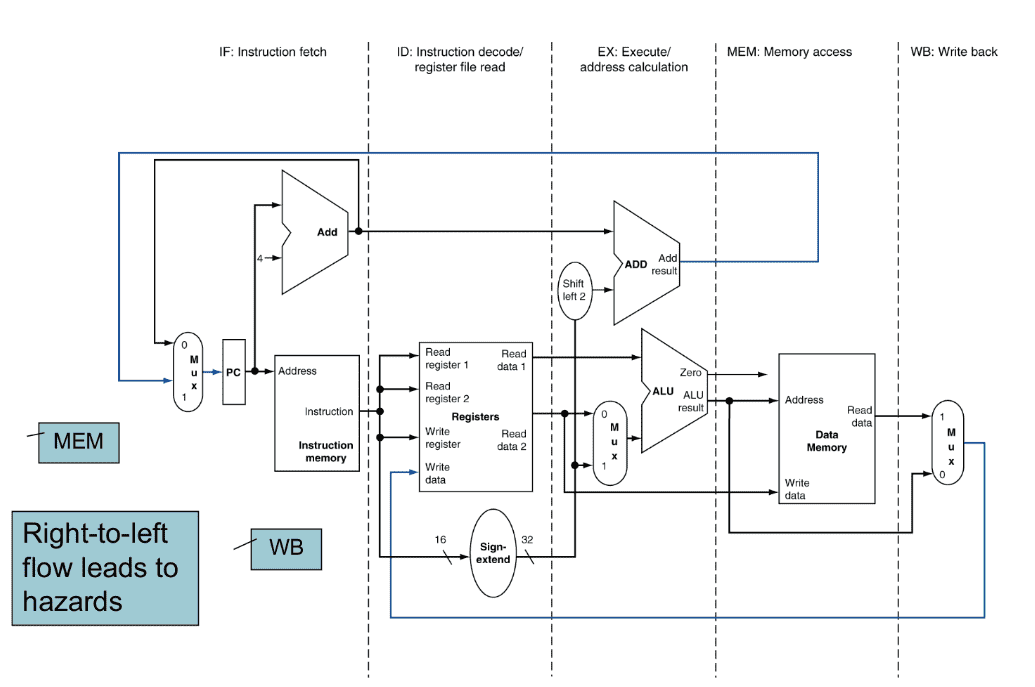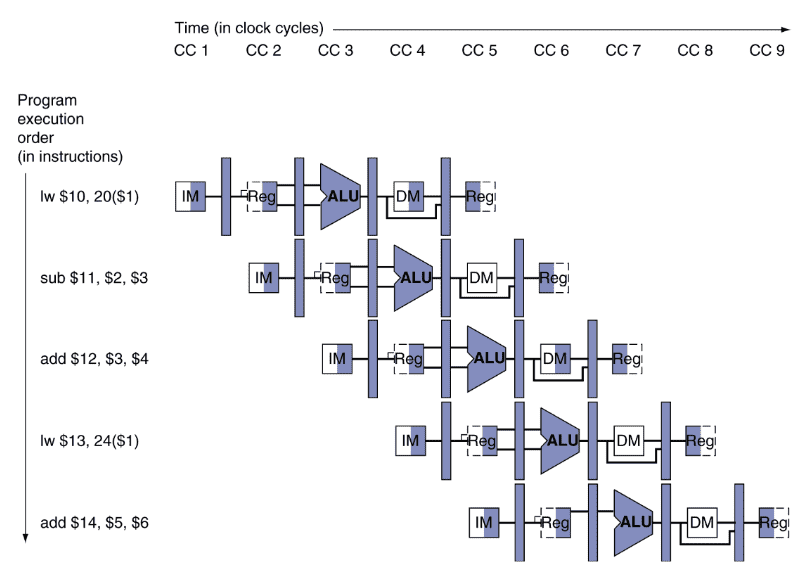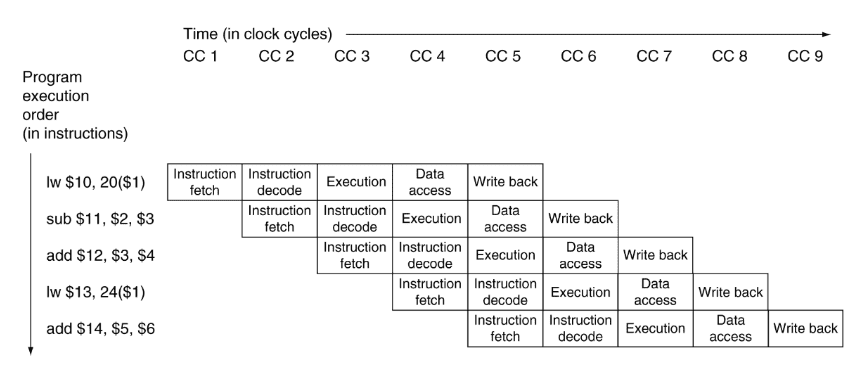07 Pipelining
Pipelining¶
Pipelining improves efficiency by executing multiple instructions simultaneously (through overlapped execution)
Pipelining produces speedup, while maintaining similar datapath
Assume time for stages is
- 100ps for register read or write
- 200ps for other stages
MIPS Pipeline¶
Each of the 5 stages have their own step

Diagram¶
Resource Usage Form¶

Traditional Form¶

Time¶
Why 200ps? The longest stage determines the clock cycle time of the pipeline

Let \(n\) be the no of instructions
| Without | With | |
|---|---|---|
| Total Time | \(800 n\) | \(800 + 200(n-1)\) |
Speedup¶
Speedup is due to increased throughput (number of instructions per unit time), not reduced latency (time for each instruction remains same)
Assuming all stages are balanced/even (all stages take same time)
If stages are unbalanced, speedup is less. Hence \(\downarrow\)
Maximum speed up is achieved only when the no of instructions is very large.
Convention of Reg Read/Write¶
It only takes half of a cycle to read or write to register file
Hence, whenever we are working with registers
- Write first half-cycle
- Read second half-cycle
This is to ensure that we always read the latest value
Hazards¶
Situations that prevent executing the next instruction in the following (next) clock cycle
Types¶
| Hazard Type | Meaning | Example |
|---|---|---|
| Structure | Instruction cannot execute because a required resource (hardware) is busy | In a single-memory system, memory-read of instruction and fetch of instruction 2 happening simultaneously |
| Data | Instruction cannot execute because data required to execute instruction is not available Need to wait for data | add $s0, $t0, $t1sub $t2, $s0, $t3 |
| Load-Use | Specific form of Data Hazard Data being loaded by a load instruction is not available, which is needed by another instruction | lw $s0, 20($t1)sub $t2, $s0, $t3 |
| Control/ Branching | Instruction cannot execute because the instruction that was fetched is not the one that is needed. |
Solutions¶
| Solution | Working | Advantage | Disadvantage |
|---|---|---|---|
| 2 Memories | Separate instruction/data memories | Avoid structure hazard | |
| Bubbling Stalling | Delaying using dummy instructions Waste | Avoids hazard | Wastes time |
| Forwarding Bypassing | Using internal buffer/latch Forwarding path valid only if destination stage is after source stage | We can save clock cycles (depends on the instruction) Reduces time taken | Not that useful when using lw; we have to introduce one bubble anyway |
| Code-Rescheduling | Reorder serializable code to avoid use of load result in the next instruction, while ensuring there is no dependency Similar to transactions like in DBMS Try to transfer all lw() to the top | Overhead for the compiler/assembler | |
| Branch Prediction | Make prediction and flush if incorrect Static means assume branch not taken Dynamic can 1 bit/2bit | ||
| Delayed Branching | Code Rescheduling for branching - From before - From below - From fall-through |
I missed some parts¶
Check slides
Branch Prediction and all
GPU¶
(not for exam)
Works on SIMD(Single Instruction Multiple Data) architecture
Works on matrix operations
The same operation is performed over multiple rows/columns
You have explicitly select GPU, hence this is explicit parallelism